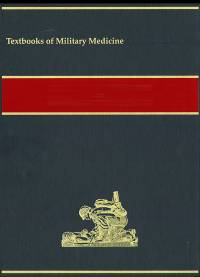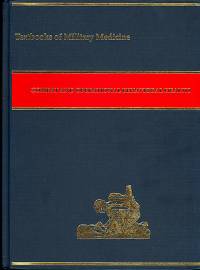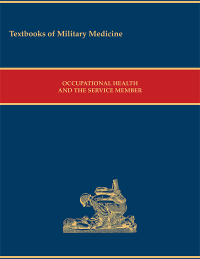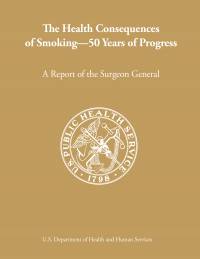Developed from the Airborne Hazards Symposium held in Washington, DC, in August 2012, this book covers diagnosis and workup of symptomatic individuals, exposure characterization, current epidemiology, the potential role of pulmonary function testing (spirometry) in surveillance, strategic research planning, clinical follow-up and registries, risk communication, and more. Symposium presentations were delivered by a diverse group of scientific experts and contain valuable veteran perspectives. This book represents a compendium of what is currently known regarding the potential long-term health consequences of exposure to airborne hazards during Operation Enduring Freedom, Operation Iraqi Freedom, and Operation New Dawn deployments.
Airborne Hazards Related to Deployment presents a balanced, comprehensive approach to furthering the understanding of airborne hazards during deployments and other military operations, ultimately improving airborne hazard prevention, protection, and avoidance while improving healthcare and minimizing adverse health outcomes of our service members and veterans.
NOTE: NO FURTHER DISCOUNTS FOR ALREADY REDUCED SALE ITEMS.
Other related products:
HAZMATS & CBRNE resources collection can be found here: https://bookstore.gpo.gov/catalog/security-defense-law-enforcement/hazar...
Physician References & Medical Handbooks resources collection can be found here: https://bookstore.gpo.gov/catalog/health-benefits/physician-references-m...
Table of Contents:
Contributors xi
Additional Contributors xiv
Foreword by The Surgeon General xv
Preface xvii
Prologue xix
Introduction xxiii
Section I: Airborne Exposures and Characterization 1
1 Overview of Airborne Hazards in Operation Enduring Freedom, Operation Iraqi Freedom, and 3
Operation New Dawn
Paul Ciminera, Coleen P. Baird, William Eschenbacher, and Deanna K. Harkins
2 Background of Deployment-Related Airborne Exposures of Interest and Use of Exposure Data in 15
Environmental Epidemiology Studies
Jeffrey S. Kirkpatrick and Coleen P. Baird
3 Deployment to Al Anbar: A Seabee Battalion Surgeon’s Perspective
Richard T. Meehan
4 Pulmonary Response to Airborne Hazards: Interpreting Cases of Suspected Deployment-Related 27
Lung Disease
Tee L. Guidotti
5 Future Improvement to Individual Exposure Characterization for Deployed Military Personnel 33
Veronique Hauschild and Jessica Sharkey
Section II: Population Surveillance 59
6 Epidemiology of Airborne Hazards in the Deployed Environment 61
Joseph H. Abraham, Leslie L. Clark, and Aaron I. Schneiderman
Airborne Hazards Related to Deployment
7 Discussion Summary: Defining Health Outcomes in Epidemiological Investigations of Populations 73
Deployed in Support of Operation Iraqi Freedom and Operation Enduring Freedom
Joseph H. Abraham
8 Pulmonary Function Testing—Spirometry Testing for Population Surveillance 89
William Eschenbacher
9 Discussion Summary: Recommendation for Surveillance Spirometry in Military Personnel 95
Michael J. Morris, William Eschenbacher, and Charles E. McCannon
10 Spirometry Monitoring and Prevention Using Spirola Software 103
Eva Hnizdo and Cara Halldin
Section III: Follow-up Medical Care of Service Members and Veterans 119
11 Discussion Summary: Basic Diagnosis and Workup of Symptomatic Individuals 121
Michael J. Morris, Corina Negrescu, David G. Bell, and Carole N. Tinklepaugh
12 Allergic Airway Disease and Deployment to the Middle East 131
Jennifer Mbuthia, Anthony M. Szema, and Jonathan Li
13 Follow-up Medical Care of Service Members and Veterans—Cardiopulmonary Exercise Testing 139
William Eschenbacher
14 Value of Lung Biopsy in Workup of Symptomatic Individuals 145
Robert Miller
15 The Problems With Constrictive Bronchiolitis: Histopathological and Radiological Perspectives 153
Michael R. Lewin-Smith, Michael J. Morris, Jeffrey R. Galvin, Russell A. Harley, and Teri J. Franks
16 Military Personnel With Postdeployment Dyspnea: Chronic Lung Disease and the Role of Surgical 163
Lung Biopsy
Michael J. Morris and Daniel E. Banks
17 Evaluating the Effects of Airborne Hazards: A Clinical Perspective From the War Related Illness and 175
Injury Study Center
Michael J. Falvo, Ronald F. Teichman, and Drew A. Helmer
18 Experience With Emerging Lung Diseases From the National Institute for Occupational Safety and Health 183
Kathleen Kreiss
19 Follow-up Medical Care of Service Members and Veterans: Case Reports—Usual and Unusual 201
Michael R. Lewin-Smith, Russell A. Harley, Jeffrey R. Galvin, and Teri J. Franks
20 Veterans Affairs Symposium: Case Reports 209
Michael J. Morris
21 Denver Veterans Affairs Medical Center Experience With Postdeployment Dyspnea Case Reports 213
Carolyn H. Welsh and York E. Miller
22 Discussion Summary: Methodological Considerations to Design a Pulmonary Case Series and a 219
National, Broad-based Registry for Veterans of Operation Iraqi Freedom and Operation Enduring Freedom
Kelley Ann Brix and Stella E. Hines
Epidemiology of Airborne Hazards in the Deployed Environment
Section IV: Health Communication and Outreach 229
23 Risk Communication: An Essential Element of Effective Care 231
Connie Raab, Deanna K. Harkins, Michelle Kennedy Prisco, and Bethney A. Davidson
24 Community-based Participatory Research: An Overview for Application in Department of Defense/ 239
Veterans Affairs Research
Erin N. Haynes
25 Toxic-Embedded Fragments Registry: Lessons Learned 245
Joanna M. Gaitens and Melissa A. McDiarmid
26 Lessons Learned From Self-Selected Registries (Agent Orange) 253
Wendi J. Dick
Section V: Research Initiatives 259
27 Research Studies: Overview and Future Direction 261
David A. Jackson
28 Considerations Regarding Biomonitoring 271
Camilla A. Mauzy, Lisa M. Kirk Brown, Coleen P. Baird, and Carole N. Tinklepaugh
29 Discussion Summary: Exposure Characterization—Questionnaires and Other Tools 283
Joel C. Gaydos and Kathleen Kreiss
30 Review of Epidemiological Analyses of Respiratory Health Outcomes After Military Deployment to 291
Burn Pit Locations With Respect to Feasibility and Design Issues Highlighted by the Institute of Medicine
Jessica Sharkey, Coleen P. Baird, Angelia Eick-Cost, Leslie L. Clark, Zheng Hu, Sharon Ludwig, and Joseph H. Abraham
31 Update on Key Studies: The Millennium Cohort Study, the STAMPEDE Study, the Million Veteran Program, 305
and the National Health Study for a New Generation of US Veterans
Nancy F. Crum-Cianflone, Michael J. Morris, Darrel Dodson, Lisa L. Zacher, and Ronald M. Przygodzki
32 National Health Study for the New Generation of US Veterans 317
Aaron I. Schneiderman
33 Discussion Summary: Work Group E—Strategic Research Planning 321
David A. Jackson and Michael R. Peterson
Appendix A: A Self-Reporting Tool to Collect Individual Data for Respiratory Health Effects and Military 331
Airborne Exposures
Veronique Hauschild and Jessica Sharkey
Appendix B: Respiratory Health and Exposure Questionnaire 339
Veronique Hauschild and Jessica Sharkey
Appendix C: Proposed Evaluation of Patients With Normal Spirometry 355
Appendix D: Veterans Affairs/Department of Defense Deployment Health Working Group Airborne 357
Hazards Joint Action Plan
Appendix E: Frequently Asked Questions About Military Exposure Guidelines 387
Airborne Hazards Related to Deployment
Appendix F: Executive Summary: Screening Health Risk Assessment, Burn Pit Exposures, 395
Balad Air Base, Iraq
Appendix G: Executive Summary, Addendum 2: Screening Health Risk Assessment, Burn Pit Exposures, 401
Balad Air Base, Iraq
Abbreviations and Acronyms 407
Index
Military, environmental, and occupational health providers will be most interested in this volume. Public health professionals and clinical pulmonologists and others that may treat veterans, active duty personnel, and others that have experienced an airborne substance, such as a chemical-related from an explosion, may find this information helpful for long-term treatments of symptoms.







